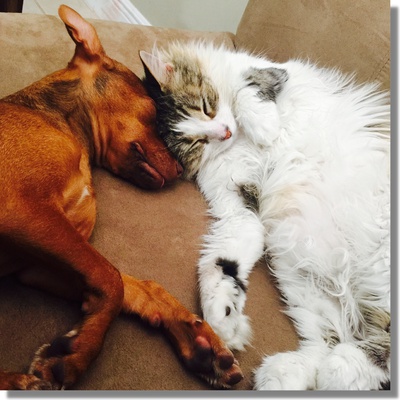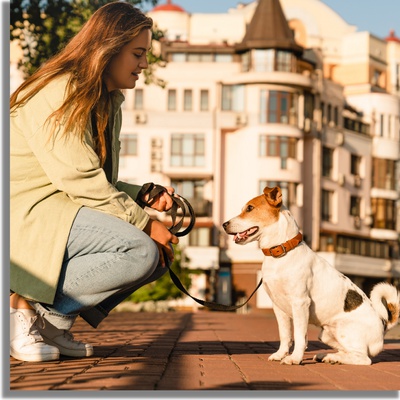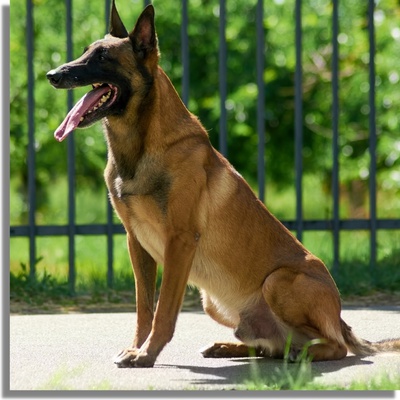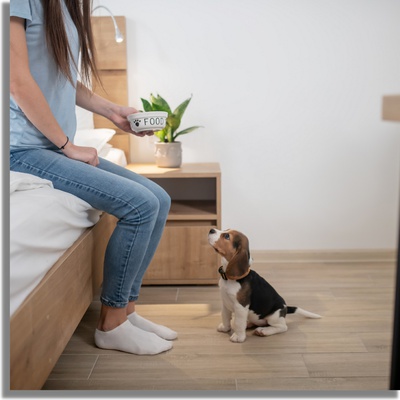Training a dog or cat
There are many reasons to train your pet. In this article we will explain why you should train your cat or dog, the main players in training your pet and the things you can teach them.
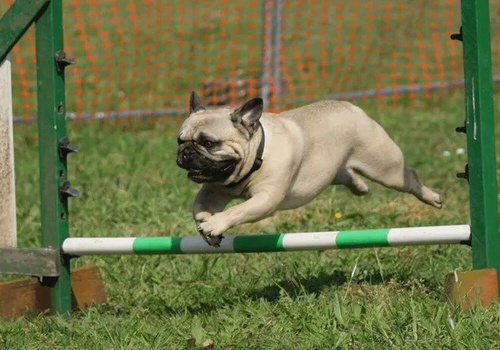
There are many reasons to train your pet. In this article we will explain why you should train your cat or dog, the main players in training your pet and the things you can teach them.
Training a pet is a hard but not impossible task. It is worth saying right away that you can do it yourself without the help of a training centre or a dog and cat trainer. Of course, there are training schools that offer training courses for pets, but this is not a requirement, just a solution if your dog or cat is particularly difficult to train. You do not need to become a dog trainer or even a dog educator to succeed.
Training benefits both you and your pet. Working with your pet on a regular basis can help you better understand their needs and make you a better owner. During training, you focus entirely on your pet, which allows you to observe their behaviour in different situations and circumstances.
Training that involves agility and tricks can maintain or improve health. Indeed, training of this nature usually involves running or jumping, as well as other forms of physical manoeuvres. Not surprisingly, this type of training increases muscle strength, flexibility and balance. As with humans, new physical challenges can help dogs and cats overcome physical and mental plateaus, keeping them interested and enthusiastic about daily life.
Teaching your pet basic skills, such as the recall command, can prevent them from getting lost. It is extremely important that your dog or cat listens to you and comes back when called. Good recall is essential, especially if your pet is overly excited on a walk or is very social.
You've made up your mind, you want your pet to have the best education!
Test your knowledge with our quiz!
Click on the title of the chapter you are interested in.
If you don't know where to start, teach your cat or dog these essential commands.
Teaching your canine friend to sit is one of the most basic commands to teach, making it an excellent starting point. A dog that knows the "sit" command will be much calmer and easier to control than dogs that have not been taught this simple command. In addition, the "Sit" command prepares your dog for more difficult commands such as "Stay" and "Come".
Another important command to teach your dog is the word "come". This command is extremely useful when you lose your grip on the leash or accidentally leave the front door open. A GPS tracker for dogs with ringing feature could be of great help.
This command is one of the most difficult to teach. This is because they have to adopt a submissive position. You can help your dog by keeping the training positive and relaxed, especially if your dog is fearful or anxious. Also remember to always praise your dog when they successfully follow the command.
This command can help keep your dog safe if what they’re curious about is something potentially dangerous. The goal is to teach your dog that they get something even better by ignoring the other object.
Like the "Sit" command, the "Stay" command makes it easier to control your dog. This command can be useful in a number of situations, such as when you don't want your dog to disturb you while you're doing housework or when you don't want your puppy to overwhelm your guests.
If your dog hasn't mastered the "Sit" command yet, take the time to practice it with them before moving on to the "Stay" command. Don’t be discouraged if it takes a while to master, most dogs prefer to be on the move rather than sitting and waiting.
Coming when called is an important skill for an adventurous cat to master. As with dogs, if your kitten slips out of their harness or pulls the leash from your hand, you'll be grateful you practised this simple command. A GPS tracker for cats with recall function could help to train your cat.
Teaching your cat to sit can be very useful for many things, including introducing them to grooming and handling, and getting them to sit still while you prepare their food.
This trick gives cats a predictable and voluntary way to interact with people, which builds their confidence. In addition, this trick can encourage a cat to cooperate with people who handle their paws in situations such as veterinary exams and nail trimming.
The education of a cat or dog begins at birth! Here are all the main players who contribute to the education of a pet.
The owner plays an important role in the training of the animal. Indeed, it is the owner who will make sure that the animal lives in a fulfilling environment. The owner is also responsible for the socialisation of his pet and, if the owner does not want to call on the services of a professional trainer, it is the owner who will teach the dog or cat the basic tricks and commands.
Cat or dog trainers will usually be approached by lost owners who do not know how to train their stubborn and difficult pet. They may also be approached by owners who want to avoid making mistakes and therefore prefers to be supervised by a professional during training sessions.
Obviously, without the animal, there is no training. You will have to rely on your pet's cooperation for effective training. But in any case, do not lose hope and remain patient! Even the most stubborn pets can be trained.
During the first eight weeks of the pet’s life, the breeder is present but remain in the background. It is only at the end of the first two months that the breeders take part in the socialisation of the kitten or puppy. It is the breeder's responsibility to introduce the pet to all the different situations they will encounter in their life as an adult cat or dog. This ranges from exposure to people and other animals to places outside the home to certain noises that the animal is likely to encounter in the future.
During the first eight weeks of life, mothers teach their puppies or kittens touch and affection by licking them, which is essential for bonding and making them feel safe. Puppies and kittens learn to compete for resources and attention and to co-exist with their siblings. This is a big part of their socialization. The mother also ensures that her puppies remain under control by scolding them.
Answer our 10 questions to test your pet training knowledge.
If you have decided to adopt a dog, it is good to know that some breeds are much more difficult to train than others. Here are some examples of the easiest breeds to train.
Poodles are very intelligent and obedient, which makes them generally easy to train. They shed very little and come in three different sizes, making them a very versatile breed.
Some poodles can be quite sensitive or anxious. They do well with gentle, clear training, as harsh techniques or sloppy, unclear training can overwhelm them.
German Shepherds are willing to work, eager to please and highly motivated. They learn quickly and are exceptionally loyal, which is why they are often used as police and military dogs.
Many German Shepherds love toys and are easily trained for everything from competitive obedience to agility to service dog work. These intelligent dogs love being part of a team with you, and they do their best work when given clear training and instructions.
Labradors are always eager to please their owners, so training comes naturally to this popular breed. They are easy to train as a family or working dog and tend to behave well with humans and other dogs. They are very food motivated, which can be helpful in training, but it is important to watch the amount and type of treats given to keep them in good shape.
Known to be extremely intelligent and almost irritatingly attentive, border collies are at the top of the training aptitude lists. Many border collies naturally pay attention to their owners with great concentration.
Their biggest weakness is that many border collies can be nervous around new people, places and things.
Training your dog or cat will always require a significant commitment on your part. Whether it is an investment of time or work on yourself to be a good trainer. The stakes are high: to live up to the love your pet has for you.
Remember that they are never ill-intentioned: a cat or dog never misbehaves on purpose; you simply have to show it the way to a serene cohabitation with humans. Find out why you should train your pet by reading the first chapter of our guide.
Answer our 10 questions to test your pet training knowledge.
